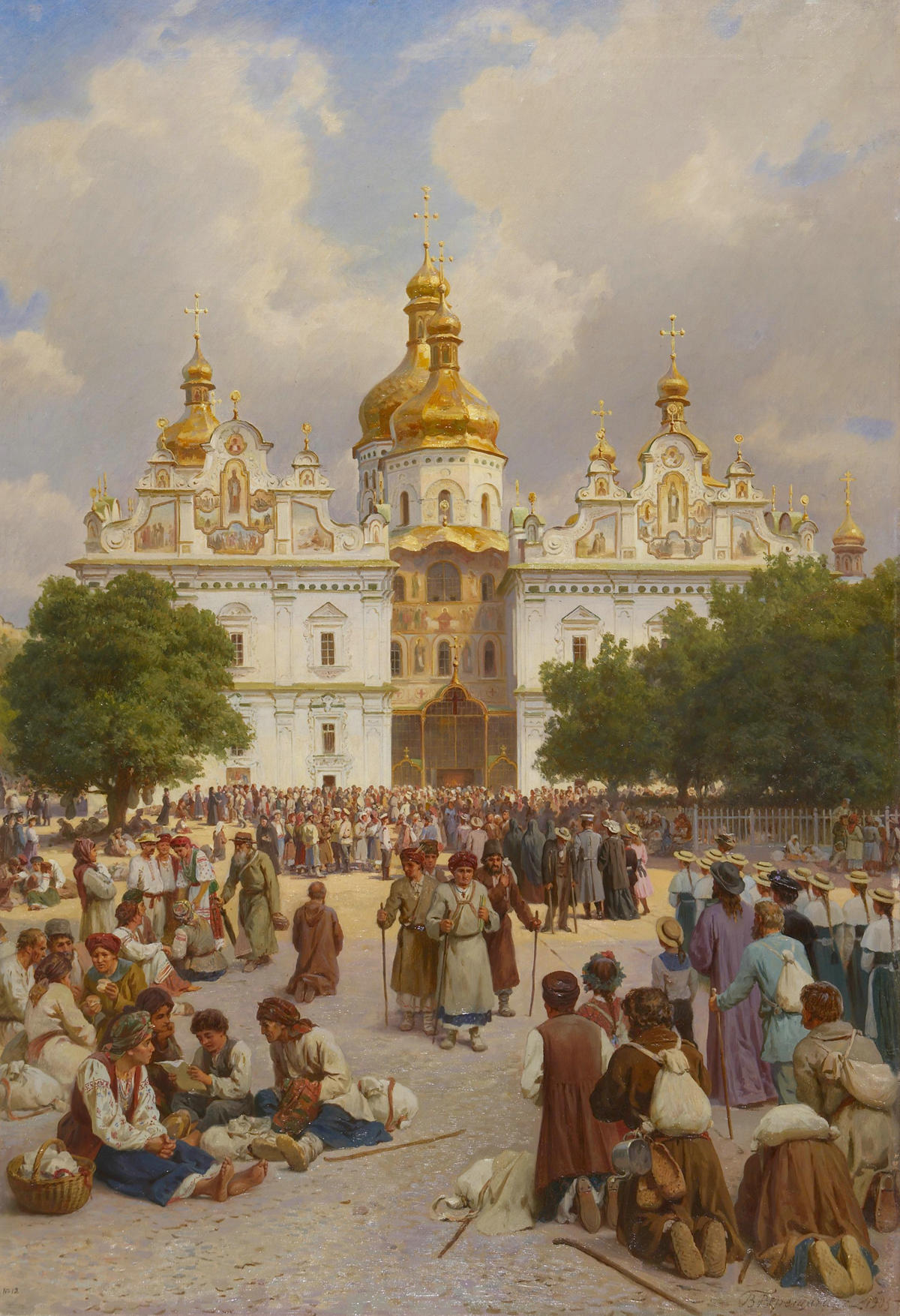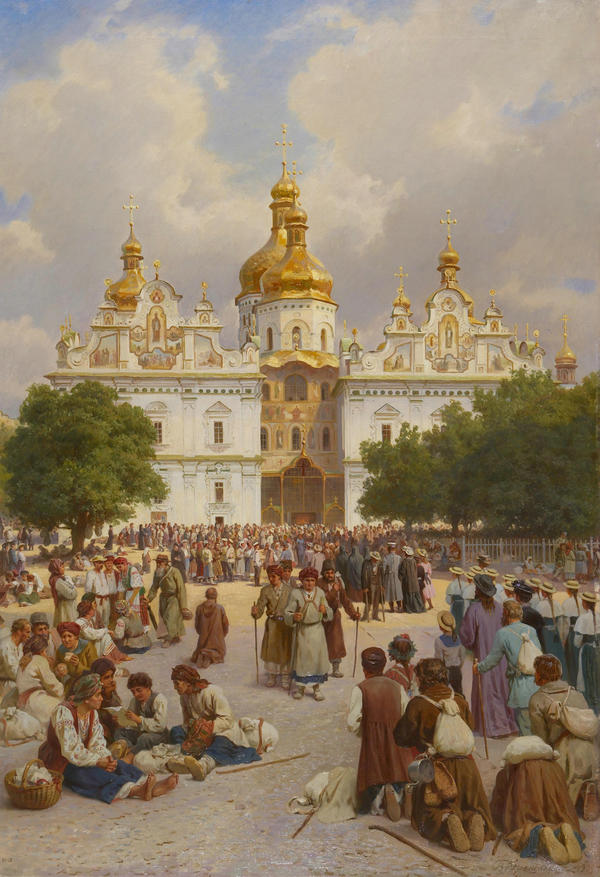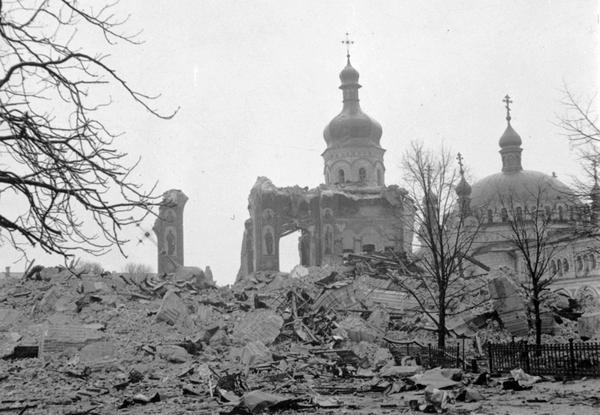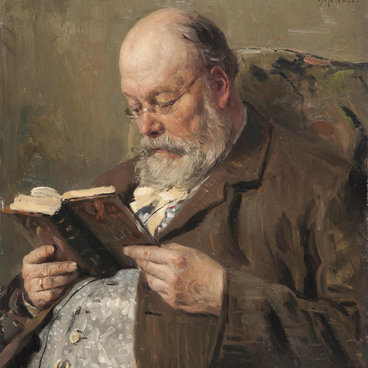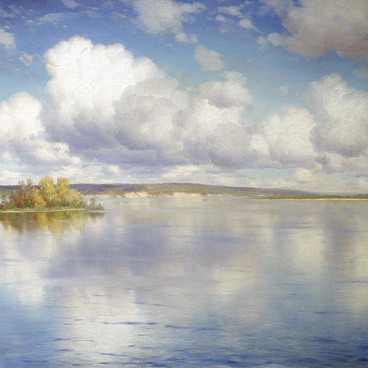Born into a family of artists, Vasily Vereshchagin followed the career of his grandfather, Ivan Vasilyevich, and his father, Pyotr Prokopyevich, an icon painter. Like his father, Vasily Vereshchagin often painted religious themes. The Great Church of the Kiev-Pechersk Lavra depicts devout crowds flocking to the Assumption Cathedral of the monastery. People of different social classes – poor and rich, commoners and nobles – would come every day to the sacred place to venerate the relics. At first glance, the great crowd might suggest celebrations of a major Orthodox feast day, yet, back in the 19th century, it was an everyday thing to see crowds of people on the square outside the cathedral.
For almost a thousand years, the Assumption Cathedral was a sacred and venerated place for Eastern Orthodox Christians. Its construction began in 1073. As legend goes, its architects came to Kiev from Constantinople where they had a vision of the Virgin Mary who told them to build a temple in her honour.
For its time, the cruciform cathedral was unprecedented in scale and design. The dome was supported by six pillars and their span was larger than that of St. Sophia’s Cathedral in Kiev. In ancient times, its interior was decorated with mosaics and frescoes, some of them are attributed to Alipy Pechersky, the first personally known painter of old Rus.
Pavel Rappoport, an architecture historian, wrote that the Assumption Cathedral had established canons of Russian church building: “With its hallowed tradition and the legend of its miraculous construction, the Assumption Cathedral of the Pechersky Monastery was a benchmark of church architecture. So ecclesiastical authorities would require that the typological principle of its architecture be strictly applied to other churches”.
During its long history, the cathedral suffered from earthquakes, enemy raids and fires; its exterior and interior changed several times. Vasily Vereshchagin himself took part in the 1890-1901 restoration campaign – he was in charge of painting the cathedral’s murals.
For almost a thousand years, the Assumption Cathedral was a sacred and venerated place for Eastern Orthodox Christians. Its construction began in 1073. As legend goes, its architects came to Kiev from Constantinople where they had a vision of the Virgin Mary who told them to build a temple in her honour.
For its time, the cruciform cathedral was unprecedented in scale and design. The dome was supported by six pillars and their span was larger than that of St. Sophia’s Cathedral in Kiev. In ancient times, its interior was decorated with mosaics and frescoes, some of them are attributed to Alipy Pechersky, the first personally known painter of old Rus.
Pavel Rappoport, an architecture historian, wrote that the Assumption Cathedral had established canons of Russian church building: “With its hallowed tradition and the legend of its miraculous construction, the Assumption Cathedral of the Pechersky Monastery was a benchmark of church architecture. So ecclesiastical authorities would require that the typological principle of its architecture be strictly applied to other churches”.
During its long history, the cathedral suffered from earthquakes, enemy raids and fires; its exterior and interior changed several times. Vasily Vereshchagin himself took part in the 1890-1901 restoration campaign – he was in charge of painting the cathedral’s murals.
